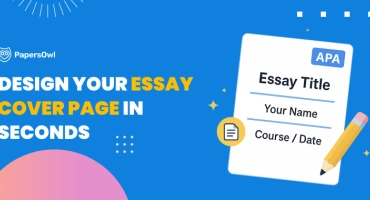ASA Style and Format
Table of contents
The American Sociological Association style (ASA) is one of the most commonly used citation formats. It ensures that researchers give appropriate credit to the original authors. The ASA citation format is essential for maintaining academic integrity and for exploring research topics in education.
This article will delve into the essentials of ASA format, from title pages to reference pages.
What is the ASA Format?
ASA format is a citation style developed by the American Sociological Association. It is great for sociology and related disciplines. Like the APA research paper structure and write a research paper in MLA format, ASA provides a set of rules for managing scholarly content.
The general rules state that the ASA format is double-spaced and goes with the full title followed by an abstract. Since this format is mostly applicable in manuscripts and sociology articles, it has slight differences from other academic styles.
Here’s a brief information about the ASA format compared to other citation tools.
| Feature | ASA format | APA format | MLA format |
| Primary Use | Sociology | Social sciences | Humanities |
| Title Page | Separate title page | Separate title page | On the first page |
| In-Text Citations | (Smith 2020) | (Smith, 2020) | (Smith 23) |
| Reference Page | “References” | “References” | “Works Cited” |
| Abstract | Required | Required | Not required |
Understanding these nuances is crucial for anyone willing to submit a sociological paper or report. Besides, it’s beneficial for students considering asking for help at the research paper writing service.
ASA Title Page
Unlike MLA style, ASA format requires a separate title page with the title located on the first page. The title creates the first impression of your paper. The authors must accompany it with the name(s) and institution(s) of the author(s), a complete word count, a running head, and a title footnote.
Here are the key elements of an ASA title page:
Title of Research
The title of your paper should be concise, descriptive, and reflect the content of your research. Avoid using abbreviations or overly technical jargon. The title should be centered and placed approximately one-third down the page.
Author’s Name
Below the title, you should list the name(s) of the author(s), centered on the page. If multiple authors contributed to the paper, their names should be listed in the order of their contribution.
Institutional Affiliation
Underneath the author’s name, you should include the name of the institution where the research was conducted. This helps to provide context and credibility to your research.
Word Count
ASA style recommends including the manuscript’s word count on the separate title page, especially for journal submissions.
Acknowledgments
If applicable, include a brief acknowledgment section on the title page to credit individuals or organizations contributing to the research.
Abstract
An abstract summarizes your research paper, typically around 150-200 words. It provides a quick overview of the main points, including the research question, methodology, findings, and conclusions. The abstract is placed on a separate page immediately following the title page in ASA manuscript format.
The abstract should be clear and concise, offering readers a snapshot of your research without too much detail. To write a research paper without plagiarizing, focus on the key aspects of your study:
- Research Topics in Education: Include your paper’s general topic or research area.
- Research Question: State the primary question or hypothesis that guided your research.
- Methodology: Briefly describe the methods or approaches used in your research, such as qualitative interviews, surveys, or data analysis.
- Findings: Summarize the main findings or results of your study.
- Conclusions: Conclude with the implications or significance of your findings in the context of your research topic.
An abstract is crucial for helping readers quickly understand the scope and focus of your paper. It should be carefully written to entice the reader to explore the full text.
Keywords
The ASA format suggests including a list of keywords after the abstract. Keywords are specific terms or phrases that capture the essential topics of your research. They are important for indexing and searching purposes.
When selecting keywords, consider the following:
- Choose terms that are directly related to your research question and findings.
- Include broader terms encompassing your research area, such as “education policy” or “sociological theory.”
- Avoid overly specific jargon that might limit the accessibility of your paper.
Keywords should be listed in alphabetical order and separated by commas. They are typically placed on the same page as the abstract, directly beneath it.
Text Formatting
The ASA style guide has specific rules for the general formatting research papers. These guidelines ensure that every separate page of your paper is easy to read. The key elements of text formatting in ASA format include:
The ASA style guide has specific rules for the general formatting of research papers. These guidelines ensure that every separate page of your paper is easy to read. In addition to text formatting, understanding the basics of sentence types is also essential to ensuring clarity and cohesion in your writing. The key elements of text formatting in ASA format include:
- Font: Use a legible font such as Times New Roman, size 12.
- Spacing: Double-spaced the entire document (including the title page, abstract, and references).
- Margins: Set 1-inch margins on all sides of the page.
- Indentation: Indent the first line of each paragraph by half an inch.
- Page Numbers: Place the page number in the upper right corner of each page. Begin with the first page of the text (excluding the title page).
Proper text formatting ensures that your paper (research or a journal article) adheres to professional academic standards.
Margins
The margin settings in ASA format are straightforward but crucial for maintaining a clean and professional appearance. All margins ─ top, bottom, left, and right ─ should be 1 inch. This provides enough space for comments or annotations and ensures your text is not crowded on the page.
Proper margin settings also contribute to the overall readability of your paper, making it easier for reviewers and readers to focus on the content without being distracted by formatting issues.
Headings and Subheadings
Headings and subheadings help to organize the content of your paper into clear sections. This helps guide the reader through your argument or discussion, making the paper structure more transparent.
The ASA style guide uses a three-level heading system:
- First-Level Headings: Use these for the main sections of your paper, such as the introduction, literature review, methodology, results, and discussion. Ensure you switch to the bold type and center these headings.
- Second-Level Headings: These headings mark subsections within the main sections. Align them to the left, in bold type, and capitalize the first letter of each word.
- Third-Level Headings: These are used for subsections within the second-level sections. They should be italicized, indented, and end with a period. Capitalize only the first word in the third-level headings.
The clear and consistent headings and subheadings are critical for people writing research papers. It also helps readers quickly locate specific information within your paper.
In-Text Citations
In-text citations in ASA format give credit to the sources you’ve referenced. You maintain the academic integrity of the whole paper by mentioning the authors after the quotation marks.
The ASA style guide uses the same author-date system as APA but with some differences in formatting. Here are the key elements of in-text citations in ASA format:
- Author’s Last Name and Year of Publication: When citing a source, include the author’s last name followed by the year of publication in parentheses. For example: (Smith 2020).
- Page Numbers: If quoting directly or referring to a specific part of a source, include the page number after the year, separated by a colon. For example: (Smith 2020:23).
- Multiple Authors: If a source has two authors, include both last names separated by quotation marks. For three or more authors, use the first author’s last name followed by “et al.” For example: (Johnson and Brown, 2018) or (Garcia et al. 2019).
- No Author: If the source has no identifiable author, use the research title instead of the author’s name. For example: (“Research Topics in Education” 2021).
In-text citations are essential for supporting your arguments and giving proper credit to the sources of information in your paper.
Footnotes and Endnotes
Footnotes and endnotes in ASA format provide additional information or clarification that might be too lengthy or distracting to include in the main text. They are also used to cite sources that do not neatly fit into the author-date citation format, such as archival materials or personal communications.
- Footnotes: Place them at the bottom of the page when writing academic papers. They should be numbered consecutively throughout the paper, starting with “1”. In addition, create a title footnote that is single-spaced and is smaller than the body page (e.g., 10-point font).
- Endnotes: These are similar to footnotes but are collected at the end of the paper, just before the reference page. Endnotes are used less frequently in ASA format but can be useful for longer papers or dissertations.
Footnotes and endnotes should be used sparingly and only when necessary to provide additional context or information that cannot be included in the main text.
Reference Page
It is a separate page in ASA format where you list all the cited sources. The reference list is crucial for crediting the authors you cited and locating the original book and periodical titles.
Here are the key elements of a reference page in ASA format:
- Title: The reference page should be titled “References” and centered at the top.
- Alphabetical Order: List all references in alphabetical order by the last name of the first author. If there is no author, use the title of the work.
- Hanging Indent: Each reference should have a hanging indent, where the first line of the reference is aligned to the left margin, and subsequent lines are indented by half an inch.
- Format: References should include the author’s last name, first name, year of publication, title of the work, and publication details. For example:
- Smith, John. 2020. Understanding Sociology. New York: Academic Press.
Johnson, Sarah, and Jane Brown. 2018. “Research Topics in Education.” Journal of Educational Research 45(3):123-145.
The reference page is essential to your research paper or journal article. It ensures that your work meets the highest academic standards.
General Writing Rules
In addition to specific formatting guidelines, the ASA style emphasizes the importance of clear and concise writing. When writing your research paper, consider the following general writing rules:
- Avoid Plagiarism: Always credit the original authors of the work you are referencing. Use the ASA citation format correctly to avoid unintentional plagiarism.
- Use Active Voice: Whenever possible, use the active voice to make your writing more direct and engaging.
- Be Concise: Avoid unnecessary jargon or overly complex sentences. Be clear and to the point, especially when discussing research topics in education or other complex subjects.
- Proofread: Always proofread your paper for grammar, spelling, and formatting errors. Consider using a research paper writing service if you need professional assistance with editing and formatting.
Following these general writing rules ensures that your paper is well-written, properly formatted, and free from plagiarism.
Conclusion
The ASA citation style is an essential tool for researchers. Using it for sociology or related fields is beneficial for properly presenting your academic paper. Feel free to check this ASA style guide whether you are exploring research topics in education or simply want a well-organized paper. Consider these rules for your next projects.
Also, remember to ask a research paper writing service for help by saying, “Do my research paper for me”!







